| P A R K S | tj|tl|in|ca|st |
Y E L L O W S T O N E N A T I O N A L P A R K
M U D V O L C A N O
Northwestern Wyoming
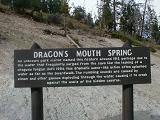
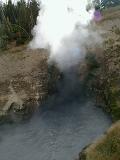
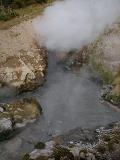
This is Dragon's Mouth Spring. It really does sound dragon-like. Not that I've ever actually heard a dragon, just what we all think a dragon would sound like if they existed. Yes, I'm sorry little Jimmy, dragons are not real.
"This feature has captured imaginations for centuries. The Crow saw the steam as snorts of an angry bull bison. An unknown European American gave it the current name. Its previous names have included Gothic Grotto, Blowing Cavern, and The Belcher. This surging action has decreased since 1994 no one is sure why. In 1999, more dramatic changes occurred: The water temperature dropped ten degrees and the color changed from green to chalky white."
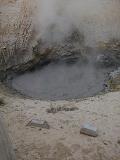
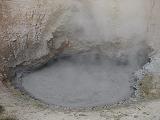
This is Mud Volcano.
"Early explorers to Yellowstone described this feature as a 'most repulsive and terrifying sight', a volcano-like cone, 30 feet high and 30 feet wide with mud erupting to cover tall trees. It's likely that a violent eruption blew out the side of the cone, leaving the crater you see here today. Rich in iron sulfides and powered by heavy gas discharges, the gray-colored water constantly undercuts the back wall."
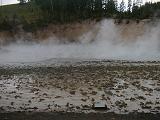
This is Mud Caldron.
"Imagine cracks or a plumbing system that reach down several thousand feet below Mud Caldron to a source of hot water. Steam produced by this boiling rises to the surface and passes through Mud Caldron, heating the water in the process - but not boiling it. The bubbling caused by carbon dioxide and other gases rising from below."
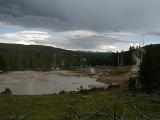
"Mud Geyser was the star attraction of the Mud Volcano Area when first seen by members of the Washburn Expedition of 1870. They described it as 'a boiling spring, a placid pond, a deep dry funnel or an active geyser according to the time of one's visit'. At that time, muddy water would explode 50 feet into the air every few hours. The geyser died in the 20th century, its plumbing clogged with mud and gravel. In 1993, soil temperatures skyrocketed for unknown reasons and trees began dying around the geyser's south rim. By January 1995, a new feature on the south bank of Mud Geyser had burst onto the scene. Stream vents and shallow pools sizzled. In 1999, mudpots formed and then exploded, leaving a deep hole with more sizzling features and mud."
<<<
Page
1
2
3
>>>
Photo Gallery
Travel Log | Reference
Prev Park Sight | Next Park Sight
|